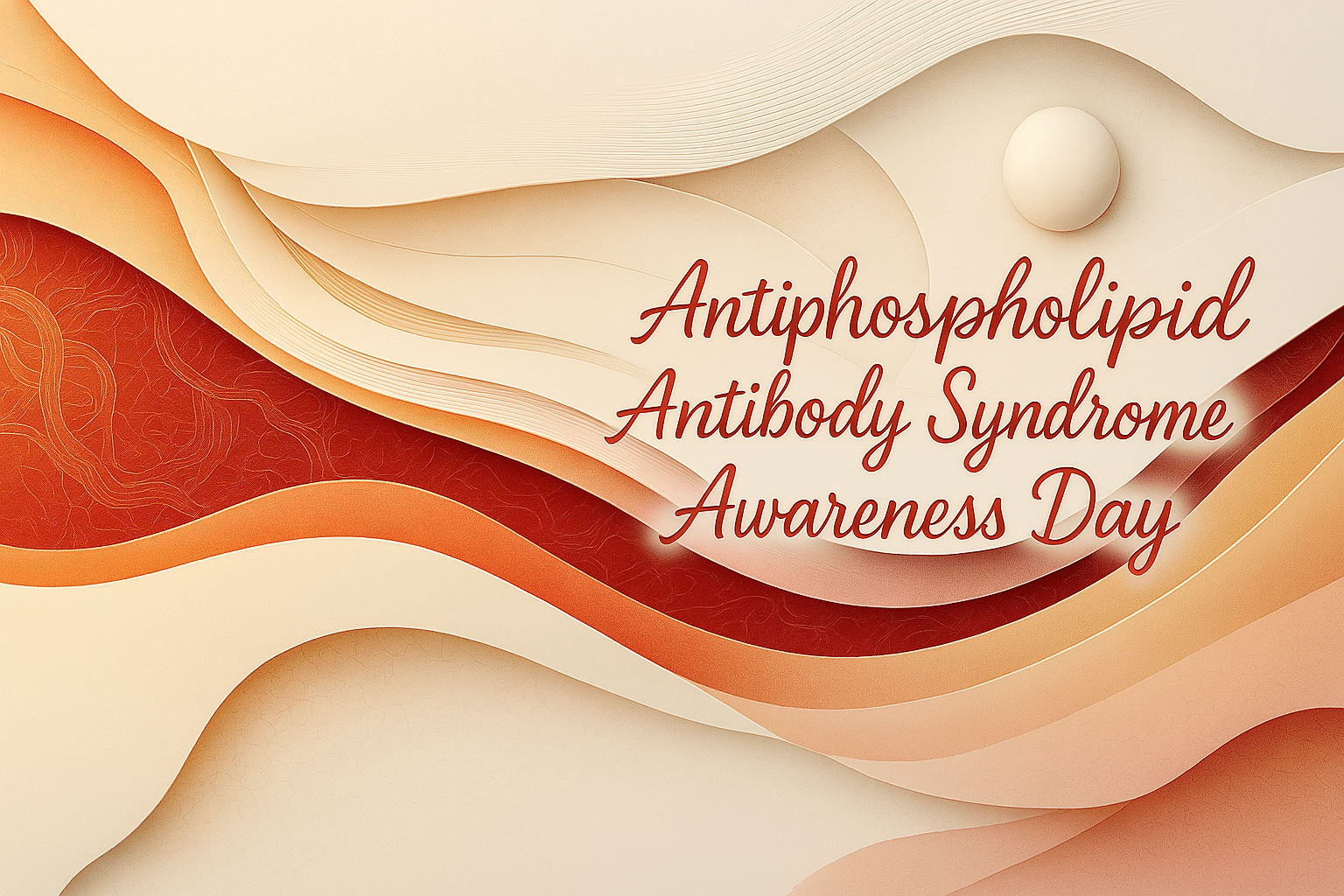What is World Antiphospholipid Syndrome (APS) Awareness Day?
World Antiphospholipid Syndrome (APS) Awareness Day takes place every year on June 9 and is observed internationally. This day brings attention to Antiphospholipid Syndrome, an autoimmune condition that increases the risk of dangerous blood clots. APS affects people of all ages and can lead to complications such as strokes, heart attacks, deep vein thrombosis, and pregnancy loss.
The goal of this day is to improve public understanding of APS, encourage early diagnosis, and support those living with the condition. Despite its serious impact, APS remains relatively unknown, which makes awareness efforts all the more important.
History and Origin
World APS Day was first launched in 2019 by the APS Foundation of America. This organization had been working since 2005 to raise awareness for the syndrome, support research, and provide resources for patients. June 9 was chosen as the official date to coincide with the foundation’s anniversary.
The observance grew out of a need to highlight a condition that is often misunderstood or overlooked. Many patients struggle for years before receiving a correct diagnosis. World APS Day now serves as a global reminder that early detection and education can save lives.
Who participates in World APS Day?
- Patients and families: Share personal stories, advocate for awareness, and support others affected by APS.
- Medical professionals: Provide information, promote early testing, and host educational sessions.
- Nonprofits and health groups: Organize campaigns, fundraisers, and events to support research and outreach.
- Social media communities: Use platforms to post facts, raise visibility, and connect with other advocates.
- Educators and students: Include APS in health education programs to increase understanding among younger audiences.
Slogans and Themes
Slogans for World APS Day include “Know APS, No Clots,” “Raise Your Voice for APS,” and “Stop the Clot.” These phrases focus on the urgency of awareness, the need for action, and the importance of visibility. Each year centers around themes of resilience, prevention, and the power of early diagnosis through education.
Colors, Symbols and Patterns
Colors:
- Burgundy: The official APS awareness color, symbolizing strength and visibility.
- White: Often paired with burgundy to represent clarity and support.
- Gray: Used to highlight the role of the medical and research community.
Symbols:
- Dragonfly: A symbol of strength and adaptability used by the APS Foundation of America.
- Blood drop: Represents the blood-related nature of the condition.
- Awareness ribbon: A burgundy ribbon is used globally to mark APS awareness.
Patterns:
- Ripple patterns: Suggest the far-reaching impact of a diagnosis on families and communities.
- Heartbeat lines: Emphasize the cardiovascular risks tied to the syndrome.
- Connected rings: Represent the patient network and mutual support within the APS community.
Most Used Hashtags
- #WorldAPSDay
- #APSawareness
- #StopTheClot
- #KnowAPS
- #RaiseYourVoiceForAPS
How do you celebrate World APS Day?
- Wear burgundy: Show your support by wearing the awareness color and explaining its meaning.
- Post facts: Share information about APS on social media to educate others and raise visibility.
- Attend virtual events: Join webinars, panels, or online support groups focused on APS.
- Support organizations: Donate to groups funding research or offering patient support.
- Talk about APS: Start conversations with friends, coworkers or family to spread awareness.
Why is World Antiphospholipid Syndrome (APS) Awareness Day important?
World APS Day matters because it gives visibility to a condition that can be life-threatening yet remains largely unrecognized. Early diagnosis can make a huge difference in preventing blood clots, strokes, and pregnancy complications. By talking about APS, more people can learn the warning signs and seek treatment sooner.
The day also strengthens the global community of people living with APS. It offers them a platform to share stories, reduce stigma, and feel less alone. Awareness leads to better care, stronger advocacy, and hopefully, in time, better treatments.
Features
June 9: Antiphospholipid Antibody Syndrome Awareness Day (APS Day)
Why do you keep falling for the same type?
Read the article Lovemaps: the hidden blueprint of our love.

